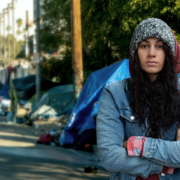Why can’t we stop homelessness? Four reasons why there’s no end in sight
When Los Angeles Mayor Karen Bass campaigned last year on reining in homelessness, she laid out bold proposals with a budget of hundreds of millions of dollars. In April, she told NPR she hoped for a “very significant reduction” this year, especially of people living on the street. But on Monday, Bass said it’s become clear that there’s simply no end in sight.
“We really need to normalize the fact, unfortunately, that we’re living in a crisis,” she said at a press conference announcing a renewal of her emergency declaration on homelessness.
The shift in tone comes after both LA and New York City recently declared a record level of homelessness, and other cities have also seen their numbers continue to climb despite considerable attention and spending to give people shelter. It’s part of a steady rise around the country since 2016, after years of successfully driving down the number of people without housing.
So what’s going on? Advocacy groups and researchers say a big driving force is the decline of affordable housing, a problem decades in the making but one that has grown significantly worse in the past few years. Here are a few ways it’s playing out.



